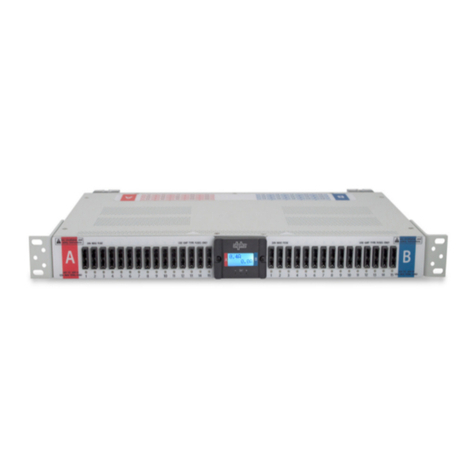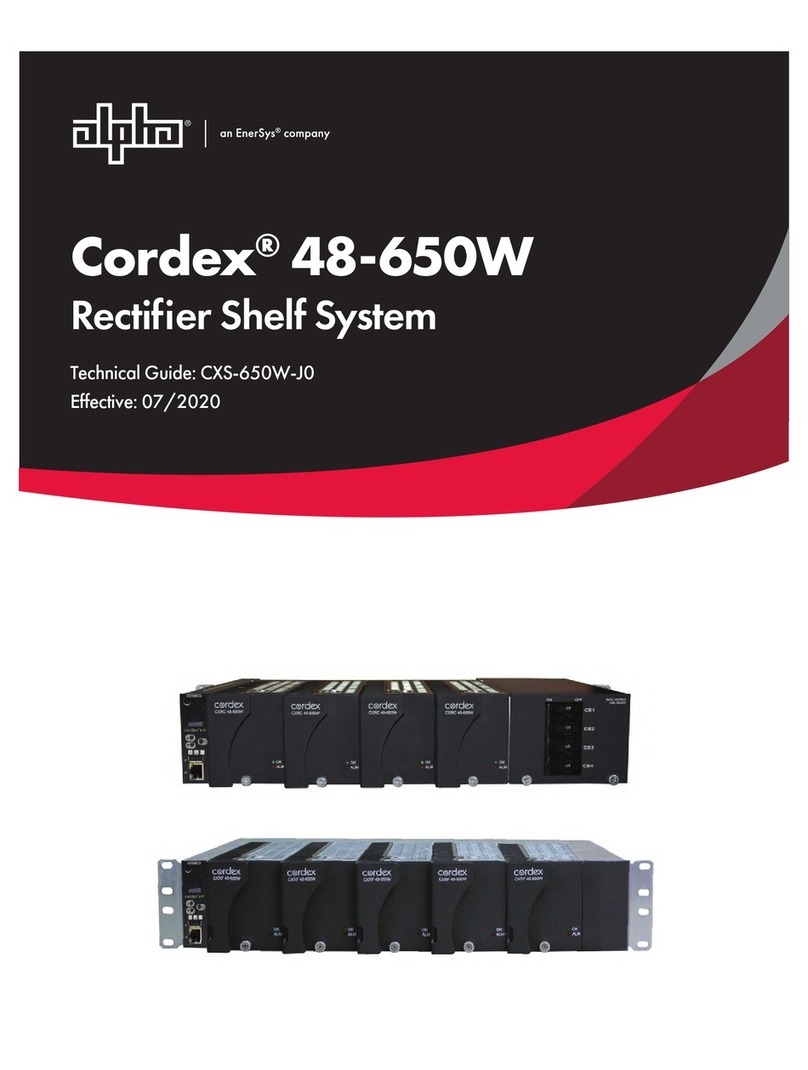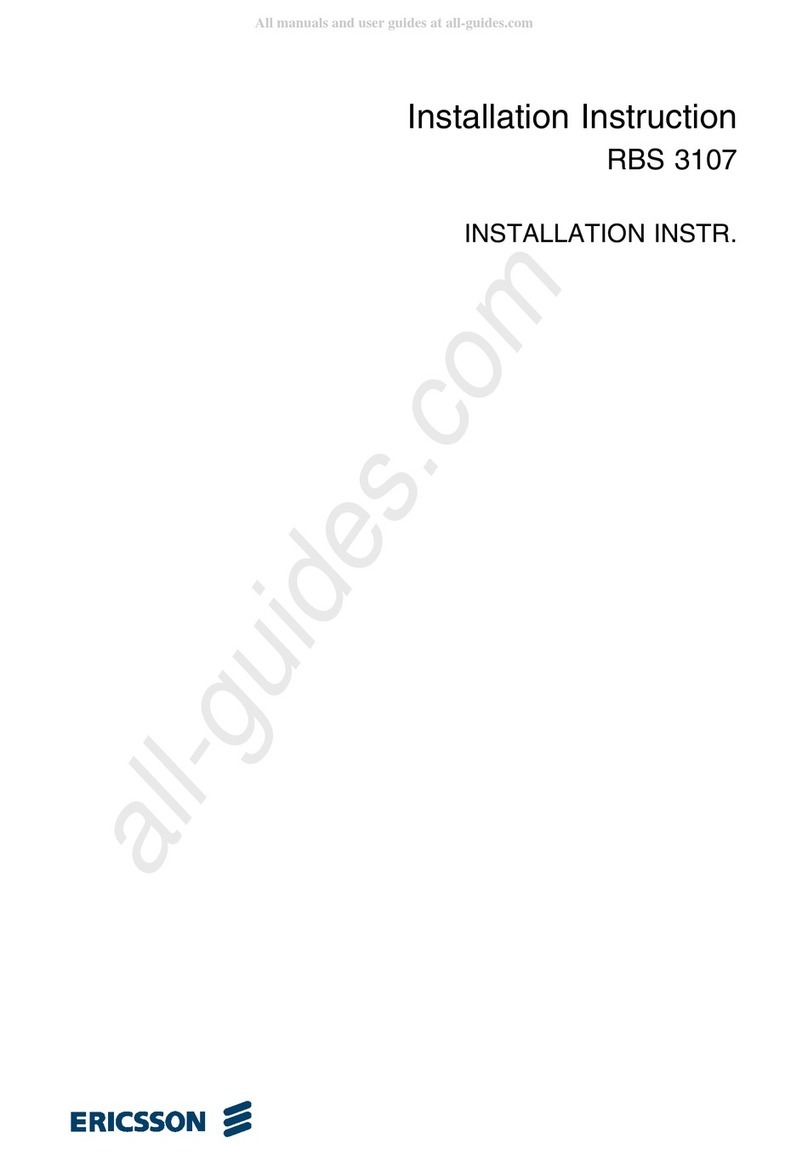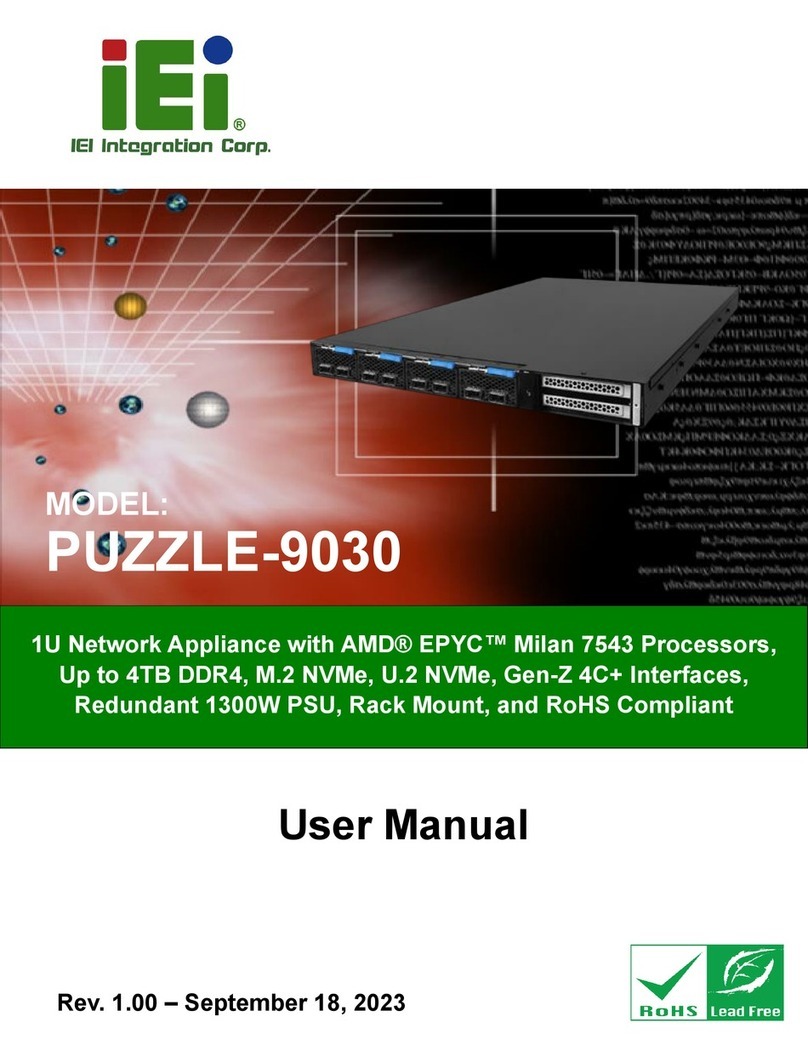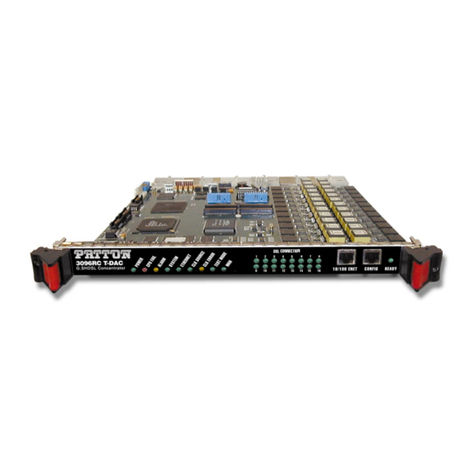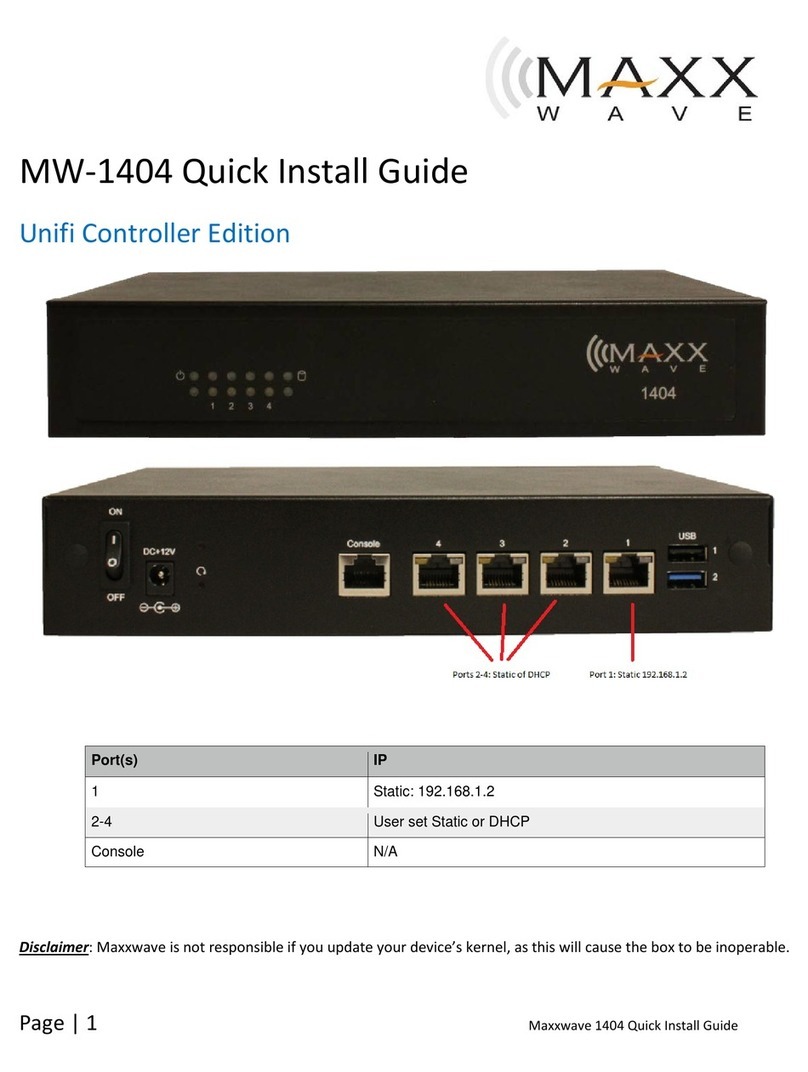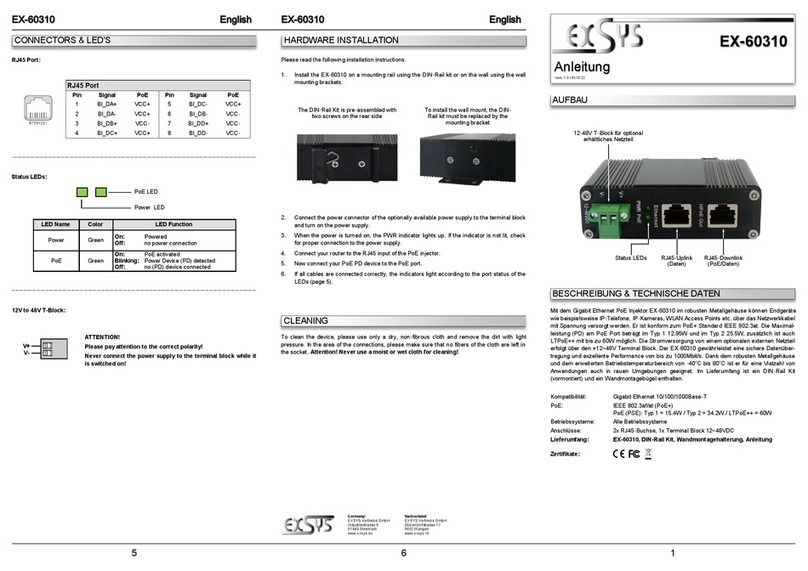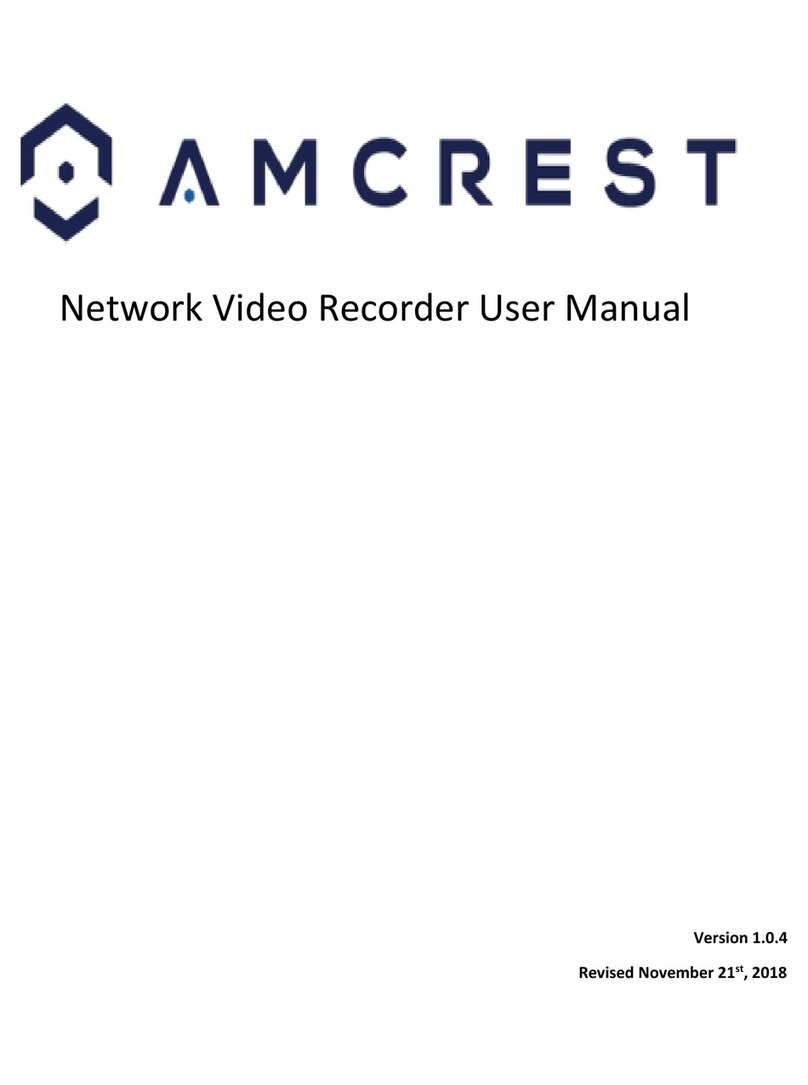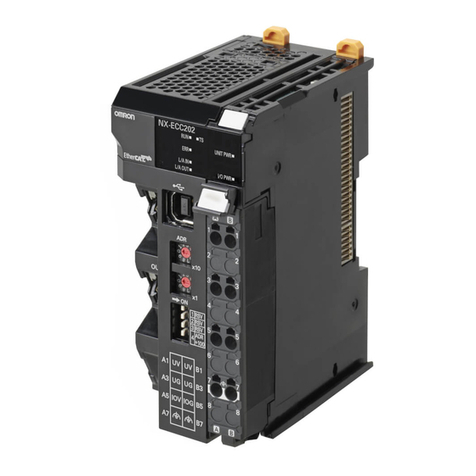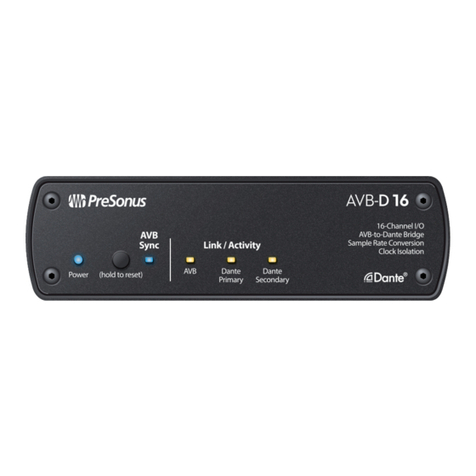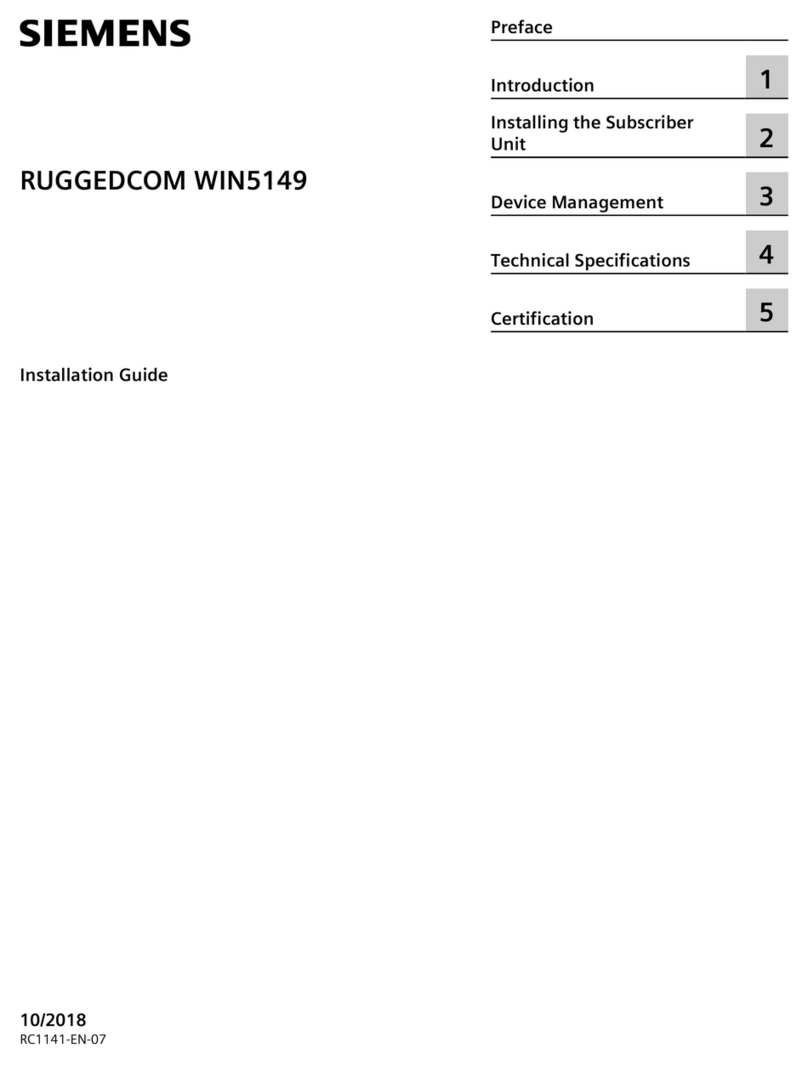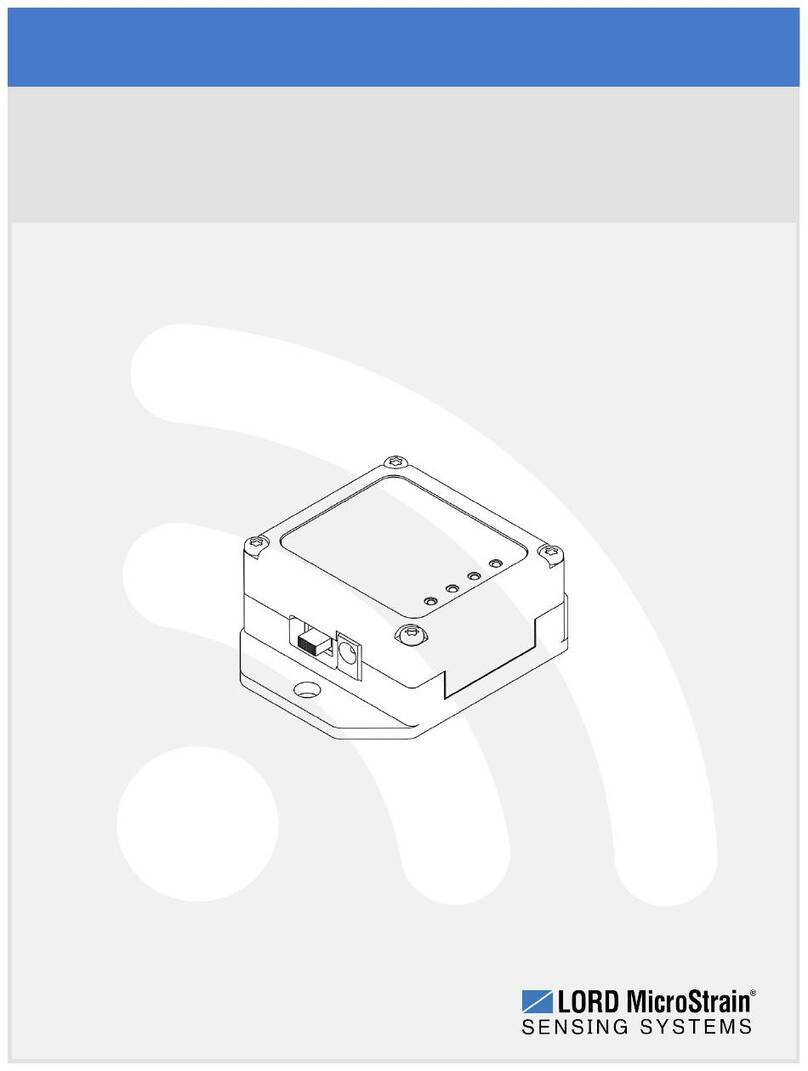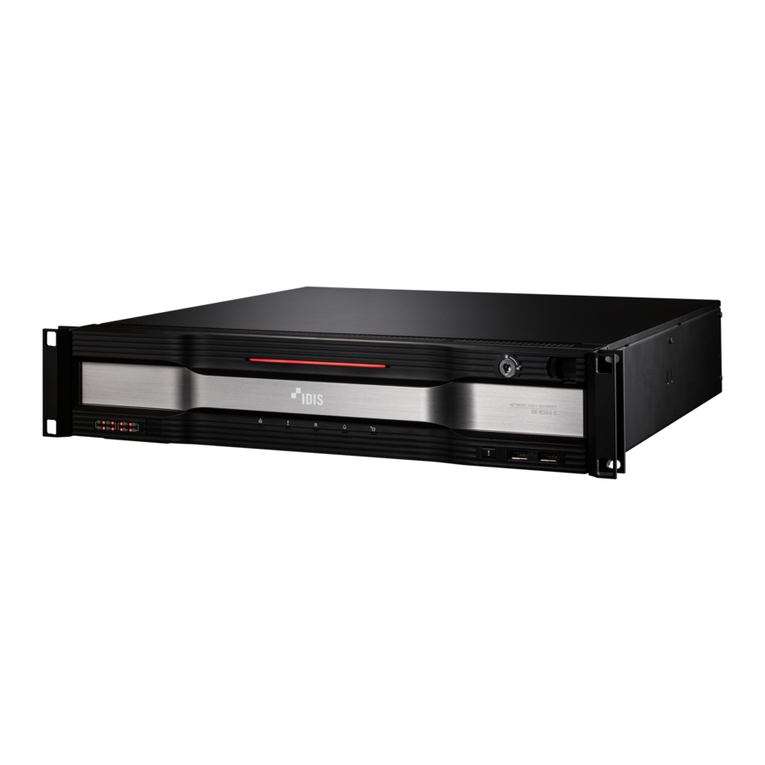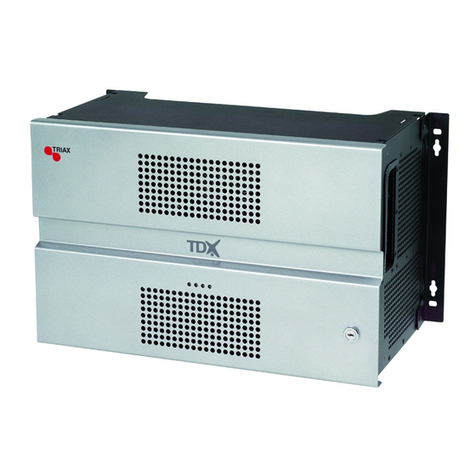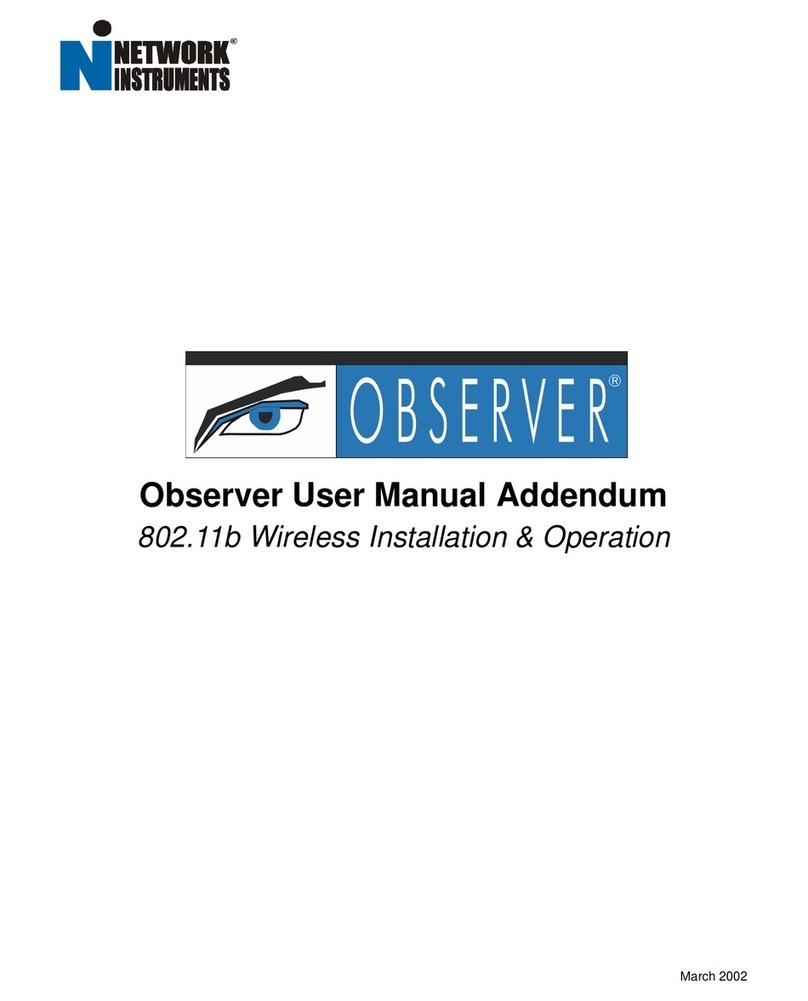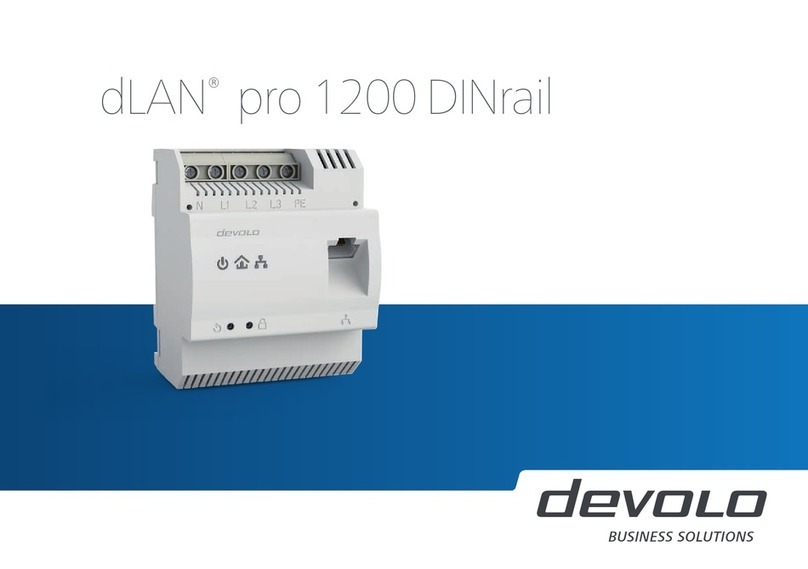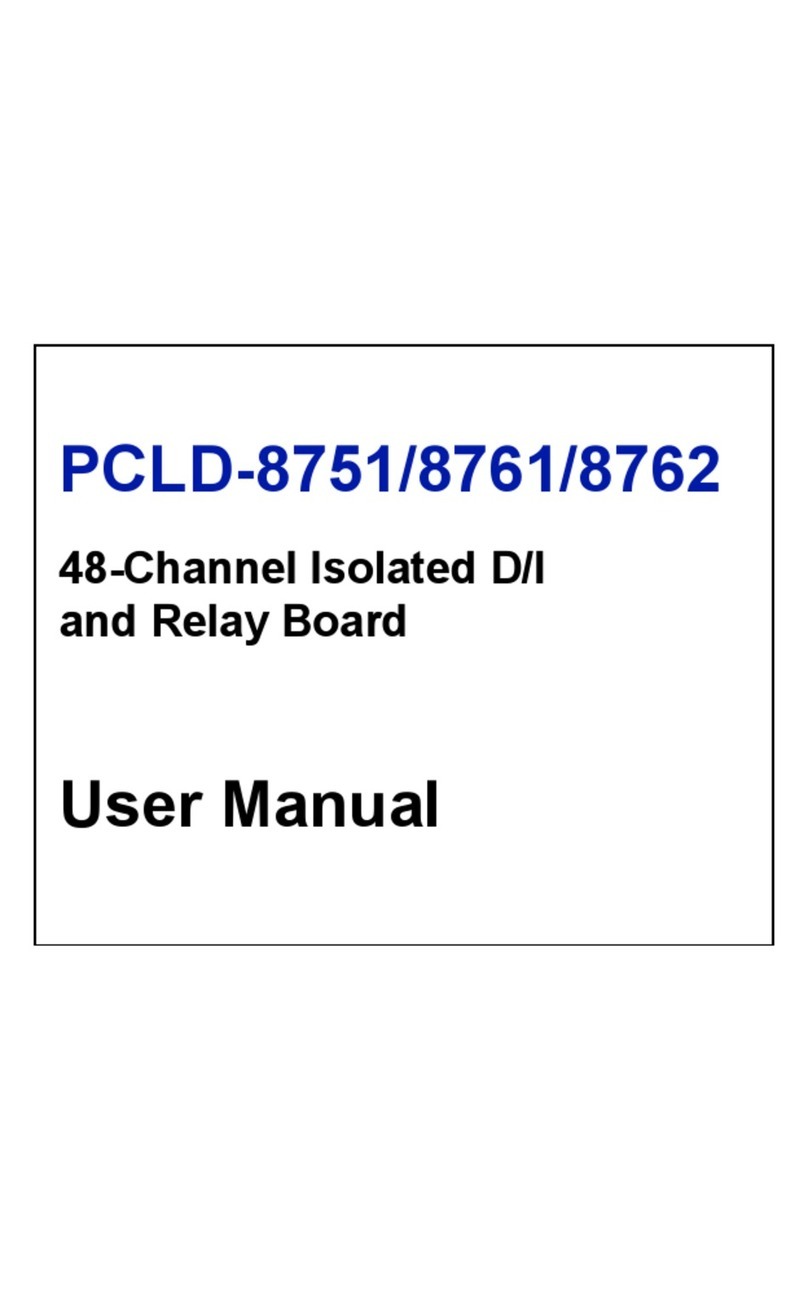EnerSys Alpha Cordex HP 3.0kW Quick start guide

Cordex HP 3.0kW
Switched Mode Rectifier System
Technical Guide: 0100037-J0
Effective: 04/2020


Cordex HP Modular Switched Mode Rectier System
Shelf Models: 19" 1RU universal mount 12000W
23" 1RU universal mount 15000W
For technical support, contact Alpha Technologies:
Canada and USA: 1-888-462-7487
International: +1-604-436-5547
Copyright
Copyright © 2020 Alpha Technologies Ltd. All rights reserved. Alpha is a registered trademark of Alpha Technologies.
No part of this documentation shall be reproduced, stored in a retrieval system, translated, transcribed, or transmit-
ted in any form or by any means manual, electric, electronic, electromechanical, chemical, optical, or otherwise
without prior explicit written permission from Alpha Technologies.
This document, the software it describes, and the information and know-how they contain constitute the proprietary,
confidential and valuable trade secret information of Alpha Technologies, and may not be used for any unauthorized
purpose, or disclosed to others without the prior written permission of Alpha Technologies.
The material contained in this document is for information only and is subject to change without notice. While
reasonable efforts have been made in the preparation of this document to assure its accuracy, Alpha Technologies
assumes no liability resulting from errors or omissions in this document, or from the use of the information contained
herein. Alpha Technologies reserves the right to make changes in the product design without reservation and with-
out notification to its users.
Alpha shall not be held liable for any damage or injury involving its enclosures, power
supplies, generators, batteries, or other hardware if used or operated in any manner or
subject to any condition inconsistent with its intended purpose, or if installed or oper-
ated in an unapproved manner, or improperly maintained.
Photographs contained in this manual are for illustrative purposes only. These photo-
graphs may not match your installation.
NOTE:
Operator is cautioned to review the drawings and illustrations contained in this manual
before proceeding. If there are questions regarding the safe operation of this powering
system, contact Alpha Technologies or your nearest Alpha representative.
NOTE:
NOTE:

0100037-J0 Rev C
2
Table of Contents
1. Safety ....................................................................................................................................5
1.1 Safety Symbols .......................................................................................................................... 5
1.2 General Safety ........................................................................................................................... 5
1.3 Mechanical Safety ...................................................................................................................... 5
1.4 Electrical Safety ......................................................................................................................... 6
1.5 Battery Safety ............................................................................................................................ 6
2. Introduction ...........................................................................................................................7
2.1 Scope of the Manual .................................................................................................................. 7
2.2 Product Overview ....................................................................................................................... 7
2.3 Part Numbers and List Options .................................................................................................. 8
3. Specications ........................................................................................................................9
4. Features ..............................................................................................................................11
4.1 3.0kW Rectier ..........................................................................................................................11
4.2 Distribution ............................................................................................................................... 14
4.3 Controller ................................................................................................................................. 14
5. Inspection............................................................................................................................15
5.1 Packing Materials ..................................................................................................................... 15
5.2 Check for Damage ................................................................................................................... 15
5.3 General Receipt of Shipment ................................................................................................... 15
6. Installation ...........................................................................................................................16
6.1 Safety Precautions ................................................................................................................... 16
6.2 Tools Required ......................................................................................................................... 16
6.3 Power System Assembly and Mounting ................................................................................... 17
7. Wiring ..................................................................................................................................18
7.1 Installation Notes ..................................................................................................................... 18
7.2 Grounding ................................................................................................................................ 19
7.3 CAN Serial Ports (Rectier Shelf) ............................................................................................ 20
7.4 AC Wiring 23" Shelf .................................................................................................................. 21
7.5 AC Wiring 19" Shelf .................................................................................................................. 22
7.6 DC Output Connections - Bulk Distribution .............................................................................. 23

30100037-J0 Rev C
7.7 Shelf ID Connection (optional) ................................................................................................. 25
7.8 Signal Wiring Connections to L-ADIO Board (optional) ........................................................... 26
8. System Startup ...................................................................................................................27
8.1 Check System Connections ..................................................................................................... 27
8.2 Verify AC and Power the Rectier Shelf ................................................................................... 27
8.3 Check Battery Polarity and Connections ................................................................................. 27
8.4 CXC HP Reset ......................................................................................................................... 27
9. Rectier Modes and Factory Defaults .................................................................................28
9.1 Rectier Modes ........................................................................................................................ 28
9.2 Factory Ranges and Defaults .................................................................................................. 29
10. Maintenance .....................................................................................................................30
10.1 Replacing a Rectier Module via the CXC HP Controller ...................................................... 30
10.2 Fan Replacement ................................................................................................................... 31
11. Troubleshooting .................................................................................................................33
12. Acronyms and Denitions .................................................................................................34
13. Warranty Statement and Service Information ...................................................................35
13.1 Technical Support .................................................................................................................. 35
13.2 Warranty Statement ............................................................................................................... 35
13.3 Product Warranty ................................................................................................................... 35
13.4 Battery Warranty .................................................................................................................... 35
13.5 Warranty Claims ..................................................................................................................... 35
13.6 Service Information ................................................................................................................ 35
14. Certication .......................................................................................................................36

0100037-J0 Rev C
4
List of Figures
Figure 1 — Cordex HP 19" 48Vdc-3.0kW Rectier Shelf ................................................................. 7
Figure 2 — Typical 48V Power System with 3.0kW Rectiers .......................................................... 7
Figure 3 — Rectier Front Panel LEDs ............................................................................................11
Figure 4 — Locking Handle Disengaged/Engaged ......................................................................... 13
Figure 5 — 19" Shelf with Bulk Distribution Busbars ...................................................................... 14
Figure 6 — CXPS-E3 System Containing 3.0kW Shelf and CXC HP Controller ............................ 14
Figure 7 — Chassis Ground ........................................................................................................... 17
Figure 8 — CAN Bus Cabling ......................................................................................................... 20
Figure 9 — AC Input and Ground for 23" Shelf ............................................................................... 21
Figure 10 — Positive and Negative Output Bars on 23" and 19" Bulk Distribution Models ............ 23
Figure 11 — Connecting Output Bars to Customer's Vertical Busbars ........................................... 24
Figure 12 — Connecting Output Bars Directly to Cables ................................................................ 24
Figure 13 — Example of a Single Bay with Two Rectier Shelves. ................................................ 25
Figure 14 — Relay Connections in the De-energized State ........................................................... 26
Figure 15 — Digital Input Connection Method ................................................................................ 26
Figure 16 — Rectier Bottom View ................................................................................................. 31
Figure 17 — Removing Front Panel from Rectier ......................................................................... 31
Figure 18 — 3.0kW Rectier Fan Assembly ................................................................................... 32
Figure 19 — Reattaching the Front Panel ...................................................................................... 32
Figure 20 — Locking the Front Panel in Place ............................................................................... 32

50100037-J0 Rev C
WARNING!
WARNING presents safety information to PREVENT INJURY OR DEATH to personnel.
Warnings are indicated by a shock hazard icon, the word WARNING, and a rule beneath
which the information appears.
CAUTION!
CAUTION indicates safety information intended to PREVENT DAMAGE to material or
equipment. Cautions are designated with a yellow warning triangle, the word CAUTION,
and a rule beneath which the information appears.
1. Safety
SAVE THESE INSTRUCTIONS: This manual contains important safety instructions that must
be followed during the installation, servicing, and maintenance of the product. Keep it in a safe place. Review the
drawings and illustrations contained in this manual before proceeding. If there are any questions regarding the safe
installation or operation of this product, contact Alpha Technologies or the nearest Alpha representative. Save this
document for future reference.
1.1 Safety Symbols
To reduce the risk of injury or death, and to ensure the continued safe operation of this product, the following sym-
bols have been placed throughout this manual. Where these symbols appear, use extra care and attention.
The use of ATTENTION indicates specic regulatory/code requirements that may aect the
placement of equipment and /or installation procedures.
NOTE:
A NOTE provides additional information to help complete a specic task or procedure.
Notes are designated with a check mark, the word NOTE, and a rule beneath which the
information appears
HOT!
The use of HOT presents safety information to PREVENT BURNS to the technician or
user.
1.2 General Safety
WARNING!
This system is designed to be installed in a restricted access location that is inacces-
sible to the general public.
1.3 Mechanical Safety
• Keep hands and tools clear of fans. Fans are thermostatically controlled and switch on automatically.
• Power supplies can reach extreme temperatures under load.
• Use caution around sheet metal components and sharp edges.

0100037-J0 Rev C
6
1.4 Electrical Safety
WARNING!
WARNING!
WARNING!
• Before working with any live battery or power system, follow these precautions:
a. Remove all metallic jewelry, such as watches, rings, metal rimmed glasses, or necklaces.
b. Wear safety glasses with side shields at all times during the installation.
c. Use OSHA approved insulated hand tools.
Lethal voltages are present within the power system. Always assume that an electrical
connection or conductor is energized. Check the circuit with a voltmeter with respect to
the grounded portion of the enclosure (both AC and DC) before performing any installa-
tion or removal procedure.
• Do not work alone under hazardous conditions.
• A licensed electrician is required to install permanently wired equipment. Input voltages can range up to 277Vac
nominal. Ensure that the utility power is disconnected and locked out before performing any installation or re-
moval procedure.
• Ensure that no liquids or wet clothes come into contact with internal components.
• Hazardous electrically live parts inside this unit are energized from the batteries even when the AC input power is
disconnected.
1.5 Battery Safety
• Servicing and connection of batteries must be performed by, or under the direct supervision of, personnel knowl-
edgeable of batteries and the required safety precautions.
• Always wear eye protection, rubber gloves, and a protective vest when working near batteries. Remove all metal-
lic objects from your hands and neck.
• Use OSHA approved insulated hand tools. Do not rest tools on top of batteries.
• Batteries contain or emit chemicals known to cause cancer and birth defects or other reproductive harm. Battery
post terminals and related accessories contain lead and lead compounds. Wash your hands after handling bat-
teries.
Follow battery manufacturer’s safety recommendations when working around battery
systems. Do not smoke or introduce an open ame when batteries (especially vented
batteries) are charging. When charging, batteries vent hydrogen gas, which can ex-
plode.
• Batteries are hazardous to the environment and should be disposed at a recycling facility. Consult the battery
manufacturer for recommended local authorized recyclers.
Hazardous voltages are present at the input of power systems. The DC output from rec-
tiers and batteries, though not dangerous in voltage, has a high short-circuit current
capacity that may cause severe burns and electrical arcing.

70100037-J0 Rev C
2. Introduction
2.1 Scope of the Manual
This manual explains the installation, interconnection, and operation of the Cordex HP 48-3.0kW rectifier systems.
2.2 Product Overview
A complete rectifier system consists of one or more power modules in a common shelf enclosure. The shelf has
connections for AC inputs, DC output, and system communications. The wide AC input operating range for global
installations and wide operating temperature ranges for installation in uncontrolled environments along with high ef-
ficiency (>96%) reduces the carbon footprint and the operating expenses.
Cordex rectifier modules use a high frequency, switched mode conversion technique to provide a fully regulated and
isolated DC output from the AC mains. Multiple 48V configurations are available up to 312.5A in a compact 1RU shelf
system. Industry leading power density (35W/in3) yields more space for revenue generating equipment.
Rectifier power modules are “hot swappable”—they can be inserted or removed from the shelf without cutting power
to or from the system or the load. Additional power modules can be included with the system at the time of ordering
or added after the shelf has been installed.
The shelf rectifier system is designed to operate with the Cordex System Controller (CXC). This controller allows the
user to configure, monitor and control the entire DC power system from its touch screen display which includes
temperature compensation, auto equalization, remote access, dial out on alarm, battery diagnostics, as well as Web
server and SNMP support for configuration and monitoring. Details of controller operation are provided in the current
version of the related software manual.
External CXC models of the system controller communicate with the shelf via RJ-12 shelf connectors. In a power
system, up to five (5) rectifier shelves may be stacked and connected to the same controller. The latest CXC-HP
controller, featuring touch screen, color LCD display with front Ethernet and USB connectors, is available as a panel
mount controller or as part of the CXPS-E3 system.
Shelf ID location technology is built into the 3.0kW rectifier. This feature is capable of remotely locating the exact posi-
tion of a rectifier within a large system. This can be useful for quickly locating a unit during a service interruption or
when a unit has failed.
Figure 1 — Cordex HP 19" 48Vdc-3.0kW Rectifier Shelf
Figure 2 — Typical 48V Power System with 3.0kW Rectifiers

0100037-J0 Rev C
8
2.3 Part Numbers and List Options
The product, options, and accessories can be ordered by using the part numbers in the following table.
Description List Option
23in 1RU universal mount 15000W shelf*
– bulk power for external distribution
– up to ve Cordex HP 3.0kW rectiers
0300216-001 (shelf/slot ID supported)
19in 1RU universal mount 12000W shelf*
– bulk power for external distribution
– up to four Cordex HP 3.0kW rectiers
0300228-001 (shelf/slot ID supported)
Cordex HP 3.0kW rectier 0100037-001
Fan assembly replacement 7400732-001
Module blank 7400424-001
Rear DC Output 19" shelf cover 0370250-001
Rear DC Output 23" shelf cover 0370250-002
*Note: Standard DC bus bars available up to a maximum of ve shelves per system.

90100037-J0 Rev C
3. Specifications
Table A — 3.0kW Rectier Specications
Electrical
Input voltage:
Nominal: 208 to 277Vac
Operating: 85 to 310Vac
Extended: 85 to 187Vac (de-rated power)
Input frequency: 45 to 65Hz
Power: 3000W continuous
Linear de-rating from 187Vac to 85Vac, 1200W @ 90Vac
Power Factor: >0.98 (50 to 100% load, nominal voltages)
THD: <5%
Eciency: 96.5% peak
Output Voltage: 42 to 58Vdc (No load 46.5 to 58Vdc)
Output Current: 55.5A @ 54Vdc (62.5A max @ 48Vdc)
(~40A @ 48Vdc at 120Vac Input)
Load regulation: <±0.5% (static)
Line regulation: <±0.1% (static)
Transient response: ±3% for 40 to 90% load step
Psophometric noise: <2mV RMS
Acoustic: <60dBa @ 1m (3ft), 30°C
MTBF: 623, 860
Mechanical
Dimensions H x W x D: 41mm x 104 mm x 333mm (1.6in x 4.1in x 13.1in)
Weight: 1.76kg (3.9lbs)
Environmental
Temperature:
Operation: -40 to 75°C (-40 to 149°F)
Full Nominal Output Power: -40 to 55°C (-40 to 131°F); >2400W @ 65°C (167°F)
Storage: -40 to 85°C (-40 to 185°F)
Humidity: 0 to 95% RH non-condensing
Heat Dissipation: <450 BTU per hour (typical)
<500 BTU per hour (worst case: 100% load at 187 Vac)

0100037-J0 Rev C
10
3.3.1 Cordex 48-3.0kW Rectifier Shelves
23in 1RU universal mount 15,000W shelf P/N 0300216-001 (shelf/slot ID supported)
Number of Rectiers: 5 x CXRF HP 48-3.0kW
Nominal AC input current (two
modules per feed):
120VAC/29A (per feed), 50/60Hz
208-277VAC/31-24A (per feed), 50/60Hz
Recommended input feeder breakers
(three feeds per shelf): 40A per feed for nominal 120, 208, 240, 277 Vac
Recommended AC input wire size: 8 AWG line; 10 AWG Protective Earth
Shelf output power: 15kW maximum
Distribution: Bulk power for external distribution
Dimensions, H x W x D: 44mm x 537mm x 420mm (1.75in x 21.1in x 16.5in)
Weight: 5.7kg (12.6lbs)
Communications ports: CAN: interface to control rectiers & smart peripherals
19in 1RU universal mount 12,000W shelf P/N 0300228-001 (shelf/slot ID supported)
Number of Rectiers: 4 x CXRF HP 48-3.0kW
Nominal AC input current (one module
per feed):
120VAC/14.2A (per feed), 50/60Hz
208-277VAC/15.5-12A (per feed), 50/60Hz
Recommended input feeder breakers
(four feeds for shelf): 20A per feed for nominal 120, 208, 240, 277 Vac
Recommended AC input wire size: 12 AWG line; 14 AWG protective earth
Shelf output power: 12kW maximum
Distribution Options: Bulk power for external distribution
Dimensions, H x W x D: 44mm x 438mm x 420mm (1.75in x 17.3in x 16.5in)
Weight: 4.5kg (9.9lbs)
Communications ports: CAN: interface to control rectiers & smart peripherals
Agency Compliance
Safety: CSA 60950-1-07
UL 60950-1
IEC 60950-1
EN 60950-1
CE marked
EMC: ETSI EN 300 386
Emissions: CFR47 (FCC) Part 15 Class A
EN 55032 (CISPR 32) Class A
EN 61000-3-2
EN 61000-3-3
Immunity: EN 61000-4-2
EN 61000-4-3
EN 61000-4-4
EN 61000-4-5
EN 61000-4-6
EN 61000-4-11
ANSI / IEEE C62.41 CatB3

110100037-J0 Rev C
4. Features
4.1 3.0kW Rectifier
4.1.1 Front Panel LEDs
The front panel LEDs indicate the rectifier status summary and patterned response to Locate Module command.
ALARM / FAULT (1)
The red LED is on during an active Module Fail alarm if the module is unable to source power due to a fault condi-
tion. Refer to the relevant controller manual for fault details.
The LED flashes (~2Hz) when a minor alarm is detected if the modules output capability has been reduced or a
minor failure is detected.
DC ON (2)
The green LED is on when the rectifier is delivering power to the load. The LED goes out when the rectifier is off. For
example, when commanded by the CXC.
AC ON (3)
The green LED is on when the AC input voltage is qualified and within the specified range 85Vac to 310Vac and
frequency 45 to 65 Hz.
LED Activity During the Locate Module Command from CXC
The Locate Module command from the CXC, causes the LEDs of the target rectifier to flash in a cyclical pattern.
This flashing normally lasts 60 seconds.
LED Activity During Power Save
When a rectifier is put into power save mode, only the AC ON LED remains illuminated.
NOTE:
The red LED will remain active if the module is receiving power from the DC bus.
Figure 3 — Rectifier Front Panel LEDs
LEDs
123

0100037-J0 Rev C
12
4.1. 2 Rectifier Rear Panel
Refer to drawings at the end of this manual for shelf power and communications connections (compatible with 2.4kW recti-
fiers):
• 0300057-08
• 0300040-08
Refer to drawings at the end of this manual for the 3.0kW shelf ID version.
• 0300216-08
• 0300228-08
4.1.3 True Module Fail Alarm
The power modules have a “true” fail alarm that provides a true indication of the power module’s ability to source
current. When the module’s output current drops below 2.5% of the rated output, a low output current condition is
detected and the Module Fail detection circuit is activated. This circuit momentarily ramps up the output voltage to
determine if the module will source current. If no increase in current is detected, the Module Fail alarm is activated.
The module will test once every 60 seconds for the condition until a current is detected. The output voltage ramping
ceases upon detection of current. A minimum 2.5% load is required to avoid the Ramp Test Fail alarm. This load can
be provided with the parallel system battery. Activation of this alarm could indicate a failed module or a failed load.
To avoid nuisance alarms for Cordex rectifier systems without batteries, and/or with a very light load (below 2.5% of
the rated output), the ramp test should be disabled. Disable the Ramp Test via the CXC menu: System > DC Sys-
tem > Inventory > Rectifiers > Configuration.
4.1.4 Heat Dissipation
Each rectifier module is equipped with a front-mounted, variable-speed fan. The fan speed is determined based on
ambient temperature, rectifier temperature, and the load. Air flow is front-to-rear with the exhaust air exiting through
internal vents at the rear of the unit. The fan may spin in required situations.
4.1.5 Over Temperature Protection
Blockage or obstruction to the air flow can result in the internal temperature to rise and reduce the output power or
even shut down the rectifier. The rectifier will resume normal operation when the temperature reduces to a safe level.
Over temperature shut down can also occur when a fan failure has occurred.
4.1.6 Wide AC Range
The rectifier delivers up to 3000W of power between 187 Vac and 310 Vac input voltage. The rectifier can deliver up
to 1920W between 85Vac and 187Vac.
During start up the rectifier begins to provide power for input voltage >95 Vac and shuts down if the input voltage
drops below 85 Vac. The THD and power factor will be out of specs for input >277 Vac.
4.1.7 AC Inrush/Transient Suppression
To prevent a surge on the AC input line, the inrush current of a rectifier module is limited to the full load steady state
line current. Modules are also protected from input lightning and transient surges in accordance with IEEE/ANSI
C62.41 Category B3 standards.
4.1.8 Soft Start
A soft start feature is used to eliminate an instantaneous demand on the AC power source. A soft start, sometimes re-
ferred to as a “current walk-in”, works by gradually (up to five seconds) ramping up the DC output current limit from zero to
the actual or defined customer setting. The rectifier output voltage is ramped from the minimum voltage to the float voltage.
This feature along with Start Delay prevents any instantaneous surge demand on the utility.
4.1.9 Start Delay
The rectifier modules are equipped with a delay timer to stagger-start a series of modules. When multiple modules
and multiple shelves, part of a larger system are used in conjunction with a controller, a start delay prevents all recti-
fiers from starting at the same time and causing an inrush on the utility. The default start delay is set to 1 second
and can be adjusted up to 250 seconds on the CXC HP controller. The built-in timer delays the switching on of the
module by the start delay interval (up to 250 seconds), which is set in the controller.

130100037-J0 Rev C
4.1.10 Current Limit/Short Circuit Protection
The current limit function determines the maximum output current limit of the rectifier module, regardless of the
output voltage or power. The maximum output current is limited to a constant value down to a short circuit condi-
tion. Current limiting can be used to mate the rectifier output current ampacity to the needs of the load and parallel
battery to minimize excessive battery recharge currents.
The rectifier will sustain a continuous short circuit at the output terminals. The maximum short circuit current will not
exceed 62.5A per module.
4.1.11 Power Limiting
Each rectifier module is designed to limit the power output to the module specification. This enables more current
to be supplied at lower output voltages, and allows matching the output power to the demands of constant-power
loads often seen in telecom equipment.
This feature can also be used for a faster recharge of flooded batteries paralleled with the load.
4.1.12 High Voltage Shutdown (HVSD)
This feature protects the load from over-voltages originating in the rectifiers. The offending rectifier module is shut
down when a high output voltage condition occurs. The red Alarm (Module Fail) LED will illuminate. The module will
restart automatically. However, if more than three over-voltage conditions occur within one minute, the module will
latch off and remain shut down until it is reset.
4.1.13 Battery Eliminator Operation
Rectifier modules maintain all specifications (except where indicated) with or without a battery or a DC source at-
tached in parallel to the output. Under these conditions there will be no monitoring or control activity if AC power
failure occurs.
4.1.14 Mechanical
An integral handle provides a means to both insert and remove the rectifier as well as locking the rectifier in place.
4.1.15 Firmware Update
The rectifier module should have its operating firmware updated through the CXC HP Controller. Using the latest
firmware will ensure the controller has the latest features and that all corrections have been applied.
NOTE:
The current limiting feature overrides the power-limiting feature.
Figure 4 — Locking Handle Disengaged/Engaged
NOTE:
The 3.0kW rectier requires AC input power to be connected to perform the rmware
update.

0100037-J0 Rev C
14
4.2 Distribution
4. 2.1 Bulk
• 23" 1RU universal mount P/N 0300057-001 (2.4kW compatible), 0300216-001 (shelf ID support)
• 19" 1RU universal mount P/N 0300040-001 (2.4kW compatible), 0300228-001 (shelf ID support)
Figure 5 — 19" Shelf with Bulk Distribution Busbars
4.3 Controller
The 3.0kW rectifier shelf is designed to operate with the CXC HP controller. A controller adds the following capabili-
ties to the rectifiers:
• Local and remote communications and monitoring
• User definable alarms
• Daily logging of events and system statistics
• Load sharing
• Power Save
NOTE:
The 3.0kW shelf is also designed to operate without a Cordex controller; however, load
balancing among the rectiers won't be as ecient, particularly at lower input voltages.
The CXC HP controller requires version 5.20 of the software in
order to correctly display the system capacity at 120Vac.
4.3.1 Internal CAN Bus
A CAN bus is used to transmit all alarm and control functions between the controller
and rectifier shelves. Two CAN serial ports (modular jacks), are located on the left side
of the rectifier shelf as viewed from the front.
The CAN bus can be daisy-chained from shelf to shelf (CAN 1 of one shelf to CAN 2
of another). The last shelf is terminated using a CAN terminator – "Figure 8 — CAN
Bus Cabling" on page 20
Figure 6 — CXPS-E3 System Containing 3.0kW Shelf and CXC HP Controller

150100037-J0 Rev C
5. Inspection
5.1 Packing Materials
Alpha Technologies is committed to providing products and services that meet our customers’ needs and expecta-
tions in a sustainable manner, while complying with all relevant regulatory requirements. As such Alpha Technolo-
gies strives to follow our quality and environmental objectives from product supply and development through to the
packaging for our products.
Rectifiers and batteries are shipped on individual pallets and are packaged according to the manufacturer’s guide-
lines.
Almost all of Alpha’s packaging material is from sustainable resources and or is recyclable. See the following table
for the material and its environmental codes.
5.1.1 Returns for Service
Save the original shipping container. If the product needs to be returned for service, it should be packaged in its
original shipping container. If the original container is unavailable, make sure that the product is packed with at least
three inches of shock-absorbing material to prevent shipping damage.
NOTE:
Alpha Technologies is not responsible for damage caused by improper packaging of
returned products.
5.2 Check for Damage
Before unpacking the product, note any damage to the shipping container. Unpack the product and inspect the
exterior for damage. If any damage is observed, contact the carrier immediately. Continue the inspection for any in-
ternal damage. In the unlikely event of internal damage, inform the carrier and contact Alpha Technologies for advice
on the impact of any damage.
5.3 General Receipt of Shipment
The inventory included with your shipment depends on the options you have ordered. The options are clearly
marked on the shipping container labels and bill of materials.
5.3.1 Shelves
Consult the packing slip and power system bill of materials to verify that you have the correct number of shelves per
your order.
5.3.2 Rectifiers
Consult the packing slip to verify that you have received the correct number of rectifiers per your order.
5.3.3 Miscellaneous Small Parts
Review the packing slip and bill of materials to determine the part number of the “configuration kits” included with
your system. Review the bill of materials to verify that all the small parts are included.
Cardboard Polyethylene
Terephthalate
Low Density
Polyethylene
Polystyrene Steel Aluminum Wood
Packing boxes
Caps
Flexible film
Packaging
Bubble wrap
Shrink wrap
Plastic bags
Foam Strapping on
pallets
Strapping on
pallets
Pallets
Lumber

0100037-J0 Rev C
16
6. Installation
The equipment is suitable for installation in Network Telecommunication Facilities.
WARNING!
This system is designed to be installed in a restricted access location that is inacces-
sible to the general public.
The following procedure is written for qualified personnel to install this product in a clean and dry environment. For
the battery installation, refer primarily to the manufacturer’s manual.
6.1 Safety Precautions
Refer to section "1. Safety" on page 5 before beginning this installation.
6.2 Tools Required
Various insulated tools are essential for the installation. Use this list as a guide:
• Battery lifting apparatus if required
• Electric drill with hammer action, 1/2" capacity
• Various crimping tools and dies to match lugs used in installation
• Load bank of sufficient capacity to load largest rectifier to its current limit
• Digital voltmeter equipped with test leads
• Cable cutters
• Torque wrench: 1/4" drive, 0 - 150 in-lb
• Torque wrench: 3/8" drive, 0 - 100 ft-lb
• Insulating canvases as required (1' x 1', 2' x 2', 3' x 3', etc.)
• Various insulated hand tools including:
- Combination wrenches - Ratchet and socket set
- Various screwdrivers. - Electricians knife
• Battery safety spill kit required for wet cells only:
- Protective clothing - Face shields
- Gloves - Baking soda
- Eye wash equipment
• Cutters and wire strippers (#14 to #22 AWG) [2.5 to 0.34 mm²]

170100037-J0 Rev C
6.3.2 Power System Size
In a power system, up to five (5) rectifier shelves may be stacked and connected to the same controller.
6.3 Power System Assembly and Mounting
6.3.1 Mounting and Grounding a Rectifier Shelf
NOTE:
Mount the shelf in a clean and dry environment. Allow at least 1.75" of free space in
front of the unit for unrestricted cooling airow. Sucient free space must be provided
at the front and rear of the power system. This is to meet the cooling requirements of
the rectiers and to allow easy access to the power system components.
The 19" and 23" shelves have been designed for mid mounting in a standard EIA relay rack. Mounting brackets ac-
commodate either 1" or 1-3/4" rack spacing.
Options for flush mounting in a 19" or 23" rack are also available, but require additional mechanical support at the
rear of the unit unless connected to bus bars
1. Mount the shelf to the customer-provided rack using at least two #12 – 24 x 1/2" screws in each bracket. Use
Phillips type screws and screwdriver to eliminate the possibility of slippage and scratching of the unit’s exterior.
2. Connect the shelf chassis ground (Figure 7) to the rack. On the rack, use thread-forming screws and star
washers that remove any paint or non-conductive coatings and establish metal-to-metal contact to ensure a
proper electrical bond.
Figure 7 — Chassis Ground
2-hole lug, 1/4"
on 5/8" center

0100037-J0 Rev C
18
7. Wiring
This chapter provides cabling details and notes on cable sizing for DC applications with respect to the product.
7.1 Installation Notes
Refer to the Installation section for safety precautions and tools required.
7.1.1 Calculating Output Wire Size Requirements
Although DC power wiring and cabling in telecommunication applications tend to ex-
ceed electrical code requirements, mostly due to the voltage drop requirements, all
applicable electrical code(s) take precedence over the guidelines and procedures in the
present chapter, wherever applicable.
Wire size is calculated by first determining the appropriate maximum voltage drop requirement. Use the formula
below to calculate the circular mil area (CMA) wire size requirement. Determine the size and number of conductors
required to satisfy the CMA requirement.
CMA = (A x LF x K) / AVD
A = Ultimate drain in amps.
LF = Conductor loop feet.
K = 11.1 constant factor for commercial (TW type) copper wire.
AVD = Allowable voltage drop.
Check again that the ampacity rating of the cable meets the requirement for the installation application. Consult local
electrical codes (NEC, CEC, etc.) for guidelines. If required, increase the size of the cable to meet the code.
Refer to Table B for cable size equivalents.
Table B — Cable size equivalents (AWG to Metric)
Cable size
(see notes 1 and 2)
Circular mils Square millimeters Equivalent metric
cable
20 AWG 1020 0.519 1
18 AWG 1624 0.8232 1
16 AWG 2583 1.309 1.5
14 AWG 4107 2.081 2.5
12 AWG 6530 3.309 4
10 AWG 10380 5.261 6
8 AWG 16510 8.368 10
6 AWG 26250 13.30 16
4 AWG 41740 21.15 25
2 AWG 66370 33.63 35
0 AWG (or 1/0) 105600 53.48 50 or 70
00 AWG (or 2/0) 133100 67.42 70
WARNING!
Ensure that the power is switched o by switching o rectiers and removing battery
line fuses, turn o battery breakers before attempting work on the wiring. Use a volt-
meter to verify the absence of a voltage. Clearly mark the correct polarity of the battery
leads before starting work on DC connections.
Table of contents
Other EnerSys Network Hardware manuals
